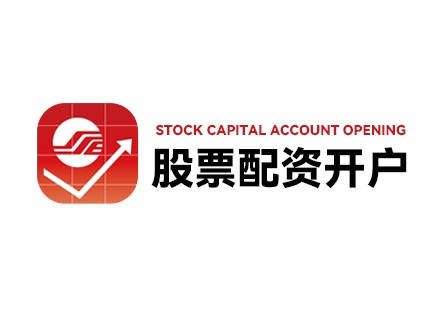 全国股票配资_国内股票配资_线上股票配资开户/168股票配资/2020配资炒股
全国股票配资_国内股票配资_线上股票配资开户/168股票配资/2020配资炒股
The Safest Stock Trading Platform: Comprehensive Analysis
Market Volatility Analysis: It is crucial for a safe stock trading platform to provide in-depth analysis of market trends and fluctuations to help users make informed decisions. Real-time data and historical analysis are key components of assessing market volatility.

Risk Management: A reliable platform should offer tools and resources to help users understand and manage risks associated with stock trading. This includes risk assessment features, risk tolerance evaluations, and risk mitigation strategies.
Leverage Ratio: The platform should have mechanisms in place to control leverage ratios to prevent users from over leveraging and exposing themselves to unnecessary risks. A balanced leverage ratio can amplify gains while minimizing potential losses.

Quick Stop-Loss: Implementing a fast and efficient stop-loss mechanism is crucial in minimizing losses and protecting investment capital. The platform should offer customizable stop-loss options to cater to different trading strategies.
Trading Strategies: Providing a diverse range of trading strategies and tools is essential for users to adapt to different market conditions and capitalize on opportunities. The platform should offer educational resources and trading tutorials to help users develop effective strategies.
Risk Management Strategies: A safe stock trading platform should incorporate risk management strategies that include diversification, hedging, and asset allocation to mitigate potential losses and protect investments during market downturns.
Market Prospects and Innovation: Assessing the future growth potential and innovation of a stock trading platform is essential in determining its long-term viability. Platforms that embrace innovation and adapt to market trends are more likely to provide a secure and reliable trading environment.
- 09-16愿意用别人的钱放大梦想多少倍?——透视股票配资的机会、利率与风险
- 09-16配资浪潮下的隐秘坐标:费控、形态与收益的多维博弈
- 09-16从配资视角全面解析天盈集团股票:趋势、资金与回报管理的实战指南
- 09-18天创网的多维交易与服务蓝图:从市场脉动到买入瞬间的实战指南
- 09-17上海配资实战:从行情研判到收益与服务的平衡
- 09-16乘风而动:透视宇通客车600066的波动、机遇与防守策略
- 09-16在股市风口中稳步前行:股票、配资与基金的全景攻略
- 09-18在久联配资的潮汐中把握股市节奏:从指标到回报的实战指南
- 09-15杠杆配资的技术、风险与可持续收益路径
- 09-17风起光伏中的城市脉搏:解码中闽能源600163的行情与策略
- 09-16放大镜下的危险交易:非法股票配资的多维解剖与短线策略解析
- 09-18闻泰科技600745:一只手机芯片题材股票的早晨与夜晚
- 09-16理解“配资迅”:趋势判断、风险控制与可执行配资方案
- 09-16风控棋局:配资网的市场研判与投资组合全景解码
- 09-19潮涌与暗流:场外配资的目标股票、成本与风控全景解析
- 09-18微信配资的本质与实操:从风控到卖出的一体化路径
- 09-17杠杆与均线之间:辽宁实盘配资的理性之道
- 09-16稳健配资:从实战到资金透明的全方位股票杠杆指南
- 09-17杠杆之光:10倍配资下的理性与技巧
- 09-18杠杆与韧性:股票期货配资的智能玩法
- 09-18长宏网:把资讯变成可执行策略的那把放大镜
- 09-17把握杠杆与风险:向“杨方配资”配置股票资金的全盘策略
- 09-17放大不是魔法:理性看待配资炒股的机会与风险
- 09-17波动之巅:配资江湖的打法与底线
- 09-17幽默研究:安全配资炒股门户的全景指南
- 09-15解码配资节奏:以趋势为灯塔的资本扩张艺术
- 09-18在杠杆世界里理性前行:关于久联配资的系统性分析
- 09-18在头条上做股票配资:能否可行与全方位风险收益解析
- 09-19机构配资利息全景与实战要点
- 09-17深度解读:股票配资指数排名网的策略逻辑与执行要点
- 09-16配资地图:在波动海洋里用策略与价值稳住收益
- 09-18诸暨杠杆中的光与影:本地股票配资的收益、风险与治理路径
- 09-16阳江股市配资的多视角分析:选股、风控与成本管理的实务指南
- 09-17闪回与前瞻:用炒股App重塑你的投资节奏
- 09-17皆上京海策略下的股票配资全流程深度分析
- 09-17集中化股票配资网站:风险、回报与因果管理研究
- 09-18在波动里找节拍:资深股票配资网站的实践手册
- 09-17基金与股票配资比例的全方位解析:长线持有、市场分析与稳健操作
- 09-19潮涌下的杠杆魔方:解码股票线上配资平台的机会与防线
- 09-18潮退之后:炒股配资行情的隐形脉动与长线机会
- 09-16风帆与锚:在炒股配资的浪潮里稳住自己
- 09-16以风险为引擎:潍柴动力与金鼎配资的全方位投资路线
- 09-18股票配资究竟进不进交易所?杠杆下的真相与全方位评估
- 09-18把复杂拆成人话:用顺阳网看未来的交易与投资机会
- 09-16关于用配资打开跌停板的全面分析与风险管理
- 09-19把1万变成5万的镜像:官网股票配资里你看不到的那一面
- 09-18利息低、心更稳:用七步把“低息股票配资”玩出长线优势
- 09-17股票配资开户平台:实时跟踪、风险应对与买入策略的实战指南
- 09-16穿透市场波动的利息、风险与策略:股票融资开户的全景解读
- 09-18构建稳健的股票配资平台:从投资原则到风控实践